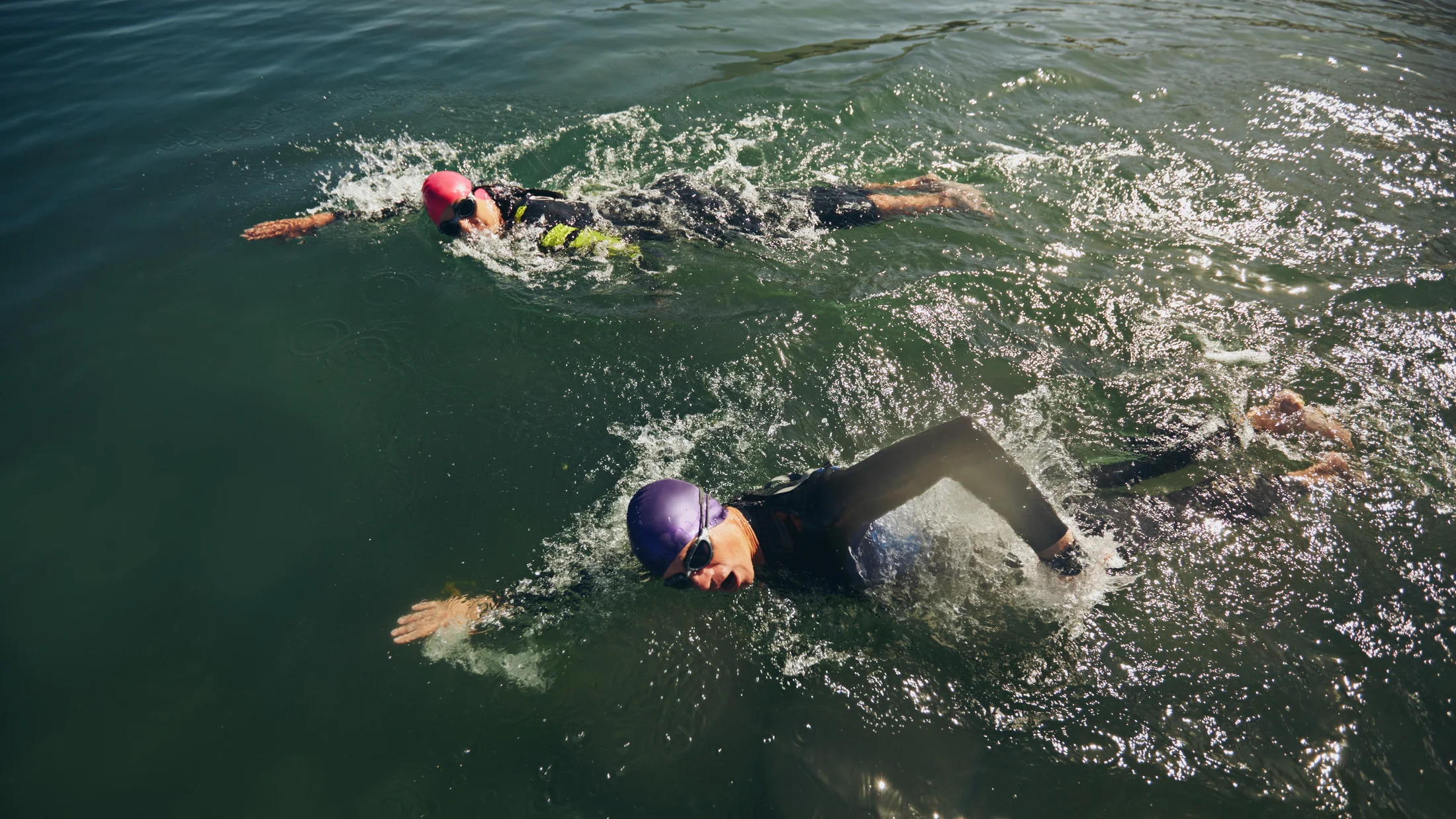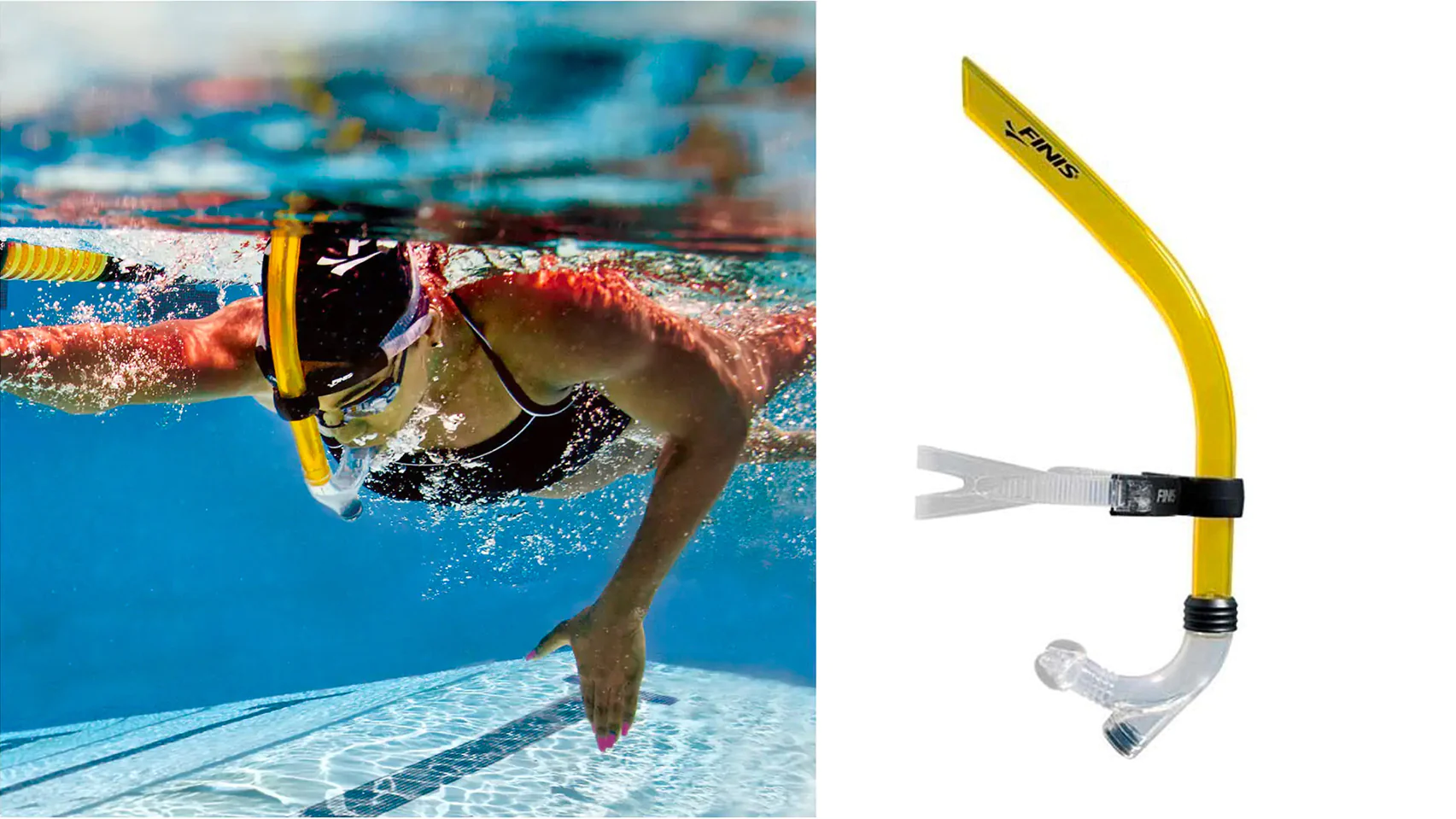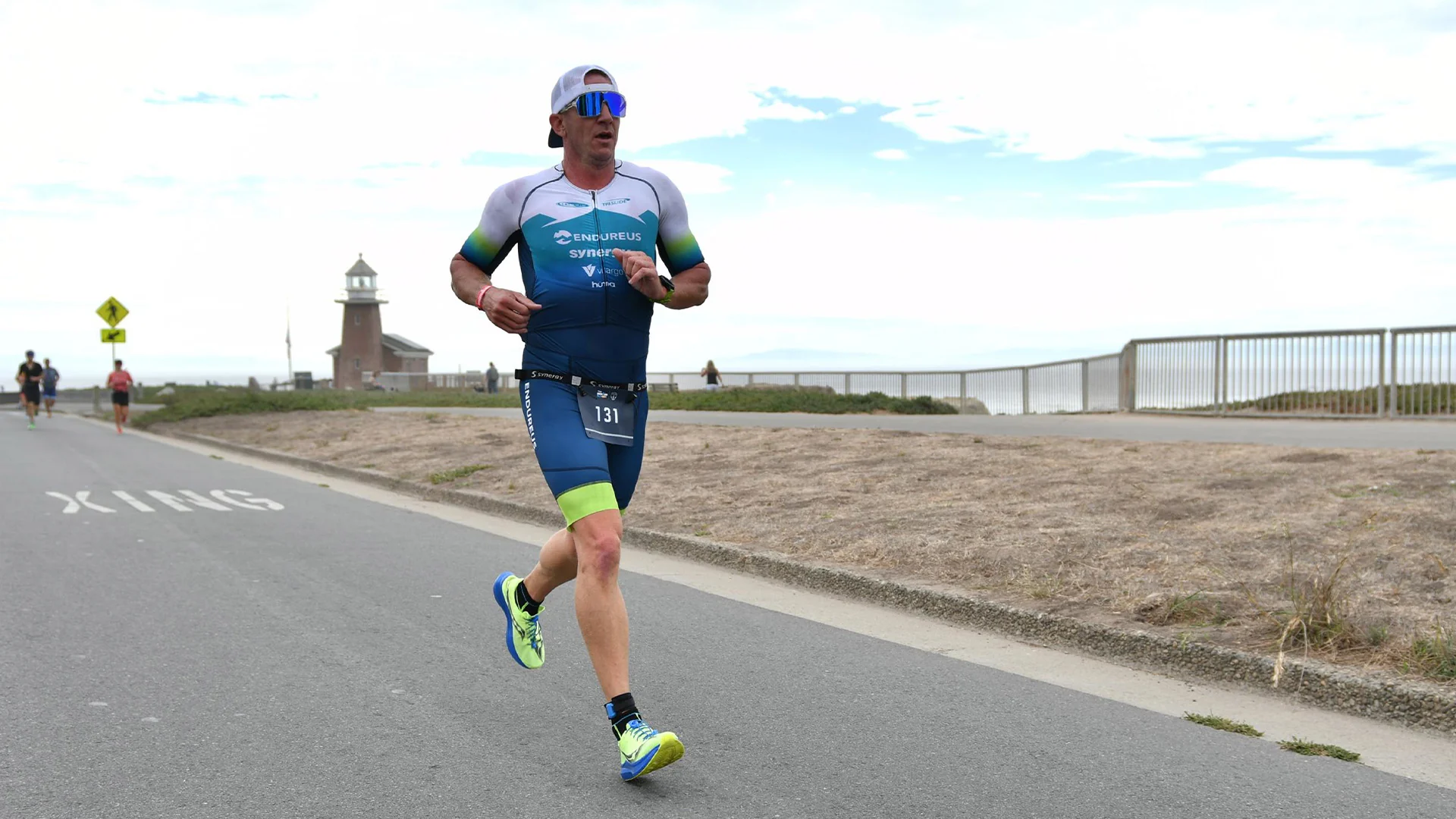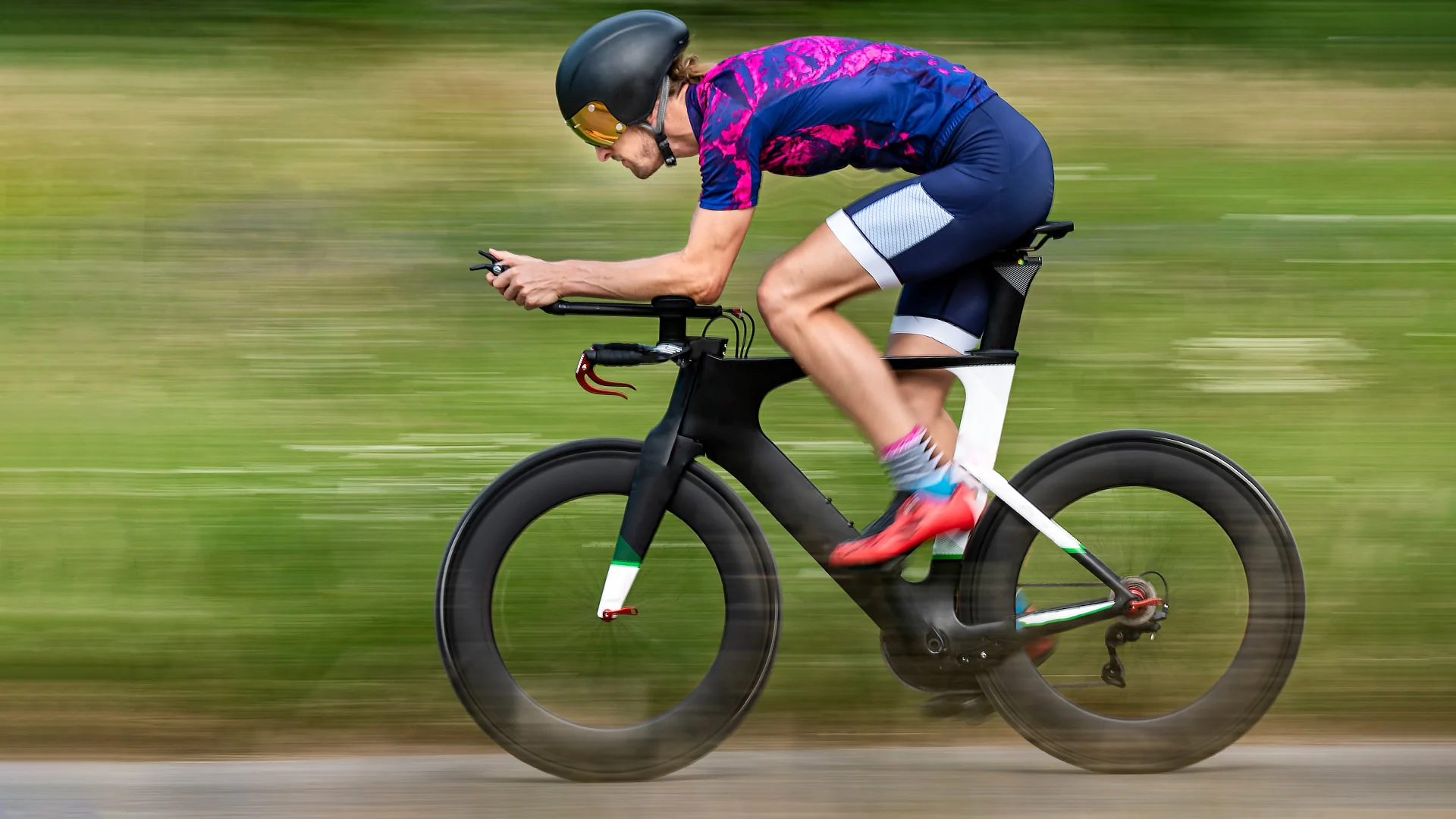Breathing is essential to swimming, especially in triathlons, where efficient breathing techniques can significantly enhance performance. Triathlon swimming has two common breathing patterns: Single Side Breathing and Bilateral Breathing.
Each way has advantages and disadvantages, so let’s delve into the details to understand when and why to use each approach.
Bilateral Breathing
Bilateral breathing refers to breathing on both sides of your body, which can be every three or five arm strokes or alternating sides during the length of the pool. Novice swimmers are often taught bilateral breathing to counteract the tendency to rely solely on their dominant side. This helps avoid excessive rotation or lifting the head to breathe, which can disrupt the rhythm and cause the swimmer to veer off course. By developing the ability to breathe on both sides, swimmers achieve a more symmetrical stroke and improved straight-line swimming.
In open water swimming, bilateral breathing offers additional advantages. It allows swimmers to view their surroundings better, aiding in sighting and navigating from buoy to buoy. It also ensures that if chop or waves is coming from one side, the swimmer can still breathe comfortably on the protected side.
In professional races, you may notice athletes using bilateral breathing when maintaining a steady pace, as it helps them swim straight without the need for frequent head lifting to sight forward. However, as the intensity increases, many professionals switch to breathing every other stroke to supply their muscles with oxygen more frequently, enabling them to swim faster. Breathing every three strokes requires enhanced processing and coordination, so ample practice is recommended before attempting it in a race.
Single-Side Breathing
Single-side breathing is the natural tendency for swimmers, as it aligns with their dominant side. Beginners often adopt this pattern quickly because they do not have to fight their instincts in the water. By breathing exclusively to one side, swimmers allow their brains and muscles to master the coordination required quickly. Additionally, single-side breathing offers more opportunities to take in oxygen since it occurs every two strokes, compared to every three with bilateral breathing.
However, relying solely on single-side breathing can overlook the advantages of bilateral breathing discussed earlier, such as stroke symmetry, adaptability in open water, and improved sighting capabilities.
Suppose you are accustomed to breathing on only one side. In that case, you can develop the ability to breathe bilaterally by incorporating specific drills into your warm-up, cool-down, and recovery laps.
Body Roll Drill
The Body Roll focuses on the controlled rotation of your body while maintaining a streamlined position. To perform this drill, use a snorkel and fins to eliminate the need for breath coordination and to keep your focus on body rotation. Follow these steps:
- Start with both arms by your sides and your head in a neutral, facedown position.
- Slowly rotate your body to one side, lifting one shoulder out of the water. Rotate from the feet, hips, and torso to the shoulders, all together.
- Repeat the rotation to the other side.
- Maintain a steady kick throughout the drill to help maintain a high body position and propulsion.
- Combine the Body Roll with freestyle swimming to incorporate body rotation into your stroke.
Sidekick Drill
Once you have developed some control over body rotation, you can move on to the Sidekick drill. This drill further enhances body rotation and balance. Follow these steps:
- Begin in a side position, with one arm stretched out in front of you and the other by your side.
- Look down towards the bottom of the pool to maintain a neutral head position.
- Keep one shoulder out of the water, with your legs, hips, and torso facing to the side.
- Find your balance in this position and gently turn your head sideways to breathe, then return your head to the facedown position to exhale.
- Repeat this cycle throughout the lap, focusing on maintaining balance and practicing breathing while rotating from side to side.
- You’ll notice that breathing becomes more manageable, especially on the side that you used to neglect.
Alternating Sidekick
The Alternating Sidekick drill builds upon the basic Sidekick. Follow these steps:
- Begin with the basic Sidekick position, as described above.
- After a few seconds, switch to the opposite side by performing three freestyle strokes.
- Transition back into the Sidekick position on the new side and repeat the cycle.
- Breathe in during the sidekick position and exhale during the three freestyle strokes.
- Maintain a steady kick, particularly when transitioning back into the Sidekick position, to prevent your legs from sinking.
- This drill improves your balance and teaches you how to breathe while rotating from side to side.




